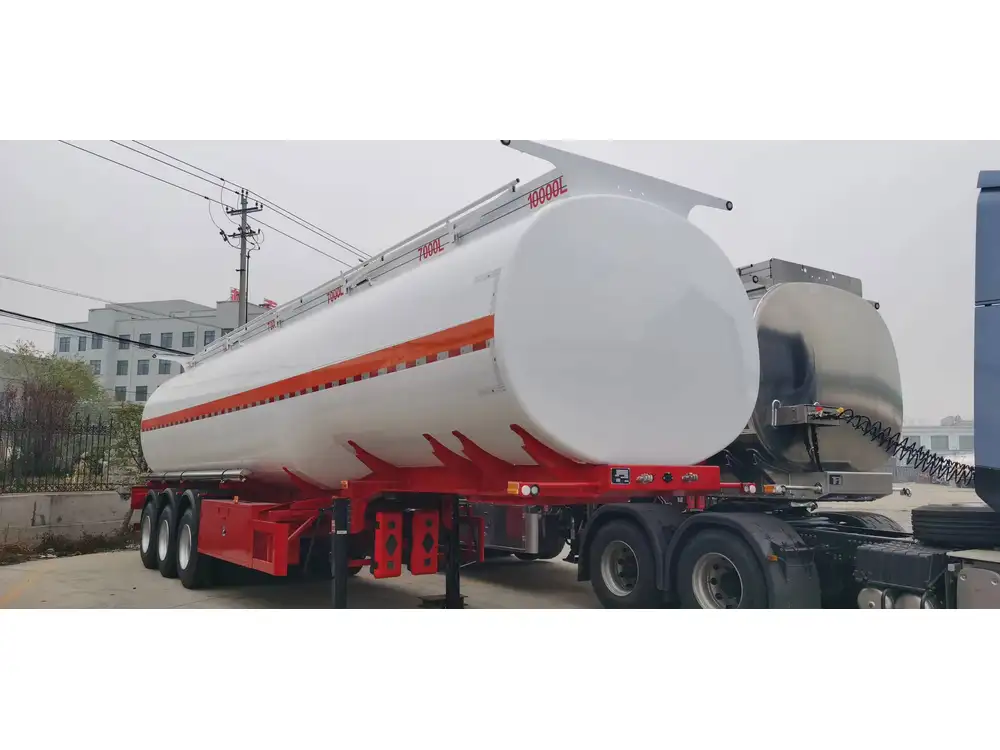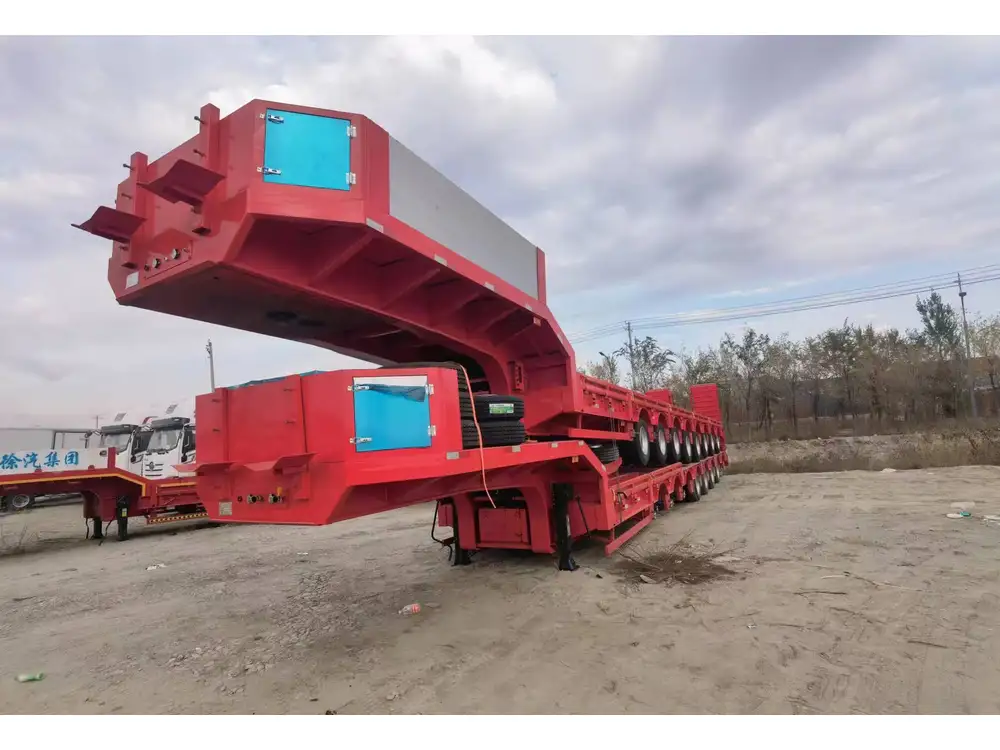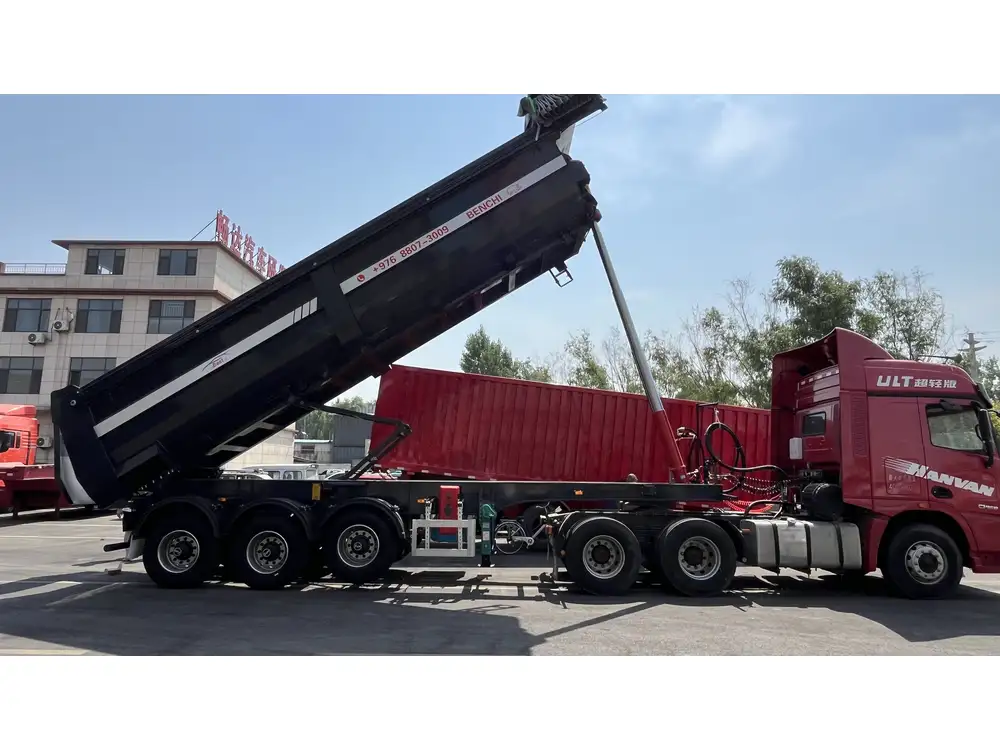Introduction to Semi Trucks and Trailers
In the world of transportation and logistics, semi trucks and trailers hold a pivotal role. They form the backbone of freight movement across cities and countries, enabling businesses to deliver goods efficiently. With a complex interplay of technology, design, and regulations, understanding these vehicles can provide a competitive advantage for fleet managers and owners. This guide aims to dissect every facet of semi trucks and trailers, ensuring you are well-equipped to make informed decisions in your transportation ventures.
What is a Semi Truck?

Anatomy of a Semi Truck
A semi truck, also known as a tractor unit, is designed primarily to tow trailers. Unlike standard vehicles, these powerful machines feature a robust build, allowing them to carry heavy loads. Key components of a semi truck include:
| Component | Description |
|---|---|
| Cab | The driver’s compartment, equipped with controls and seating. |
| Chassis | The frame supporting the truck, vital for structural integrity. |
| Engine | Powers the truck, typically diesel engines noted for torque and efficiency. |
| Transmission | Transfers engine power to the rear wheels, essential for performance. |
| Axles | Support the weight of the truck and its load, influencing handling. |
Importance of the Semi Truck in Logistics
The semi truck is not just a vehicle; it is an essential cog in the logistics machine. Businesses rely on it for:
- Efficient transportation of goods over long distances
- Flexibility in haulage options (from single pallets to full container loads)
- Quick turnaround times for deliveries, minimizing downtime
Understanding Trailers

Types of Trailers and Their Uses
Trailers are the cargo carriers that attach to the rear of semi trucks. They come in various types, each tailored for specific load types. Here’s a breakdown:
| Trailer Type | Best Suited For |
|---|---|
| Flatbed Trailers | General freight, construction materials, oversized loads |
| Reefer Trailers | Temperature-sensitive goods like food and pharmaceuticals |
| Dry Van Trailers | Non-perishable goods, providing protection from elements |
| Tanker Trailers | Liquid products such as fuel, chemicals, and water |
| Lowboy Trailers | Heavy equipment transportation, with low height for stability |
Key Features to Consider When Choosing a Trailer
Selecting the right trailer is paramount. Consider the following factors:
- Load Capacity: Assess the weight and dimensions of your typical cargo.
- Material: Options include steel for durability, aluminum for lightweight efficiency.
- Aerodynamics: Sleeker designs can improve fuel efficiency.
- Braking System: Essential for safety; options include drum and disc brakes.
- Suspension Type: Air ride for comfort, or spring suspension for sturdiness.
The Mechanics Behind Semi Trucks and Trailers

Engine Specifications and Performance
The heart of any semi truck is its engine. The specifications can greatly influence performance, efficiency, and sustainability. Key considerations include:
- Horsepower: Generally ranges from 350 to 600 HP, correlated with the load capacity.
- Torque: Critical for pulling loads; higher torque assists in better acceleration under load.
- Fuel Type: Diesel engines are prevalent due to their efficiency and torque, but alternative fuels are gaining traction.
Transmission Choices
The choice of transmission affects fuel efficiency and ease of driving. Options include:
- Manual Transmission: Offers driver control, though requires skill.
- Automatic Transmission: Easier to operate, especially in urban conditions.
Maintenance and Upkeep
Regular upkeep of semi trucks and trailers ensures longevity and reliability. Key maintenance tasks include:
- Engine Checks: Regular oil and filter changes to maintain performance.
- Brake Inspections: Ensuring safety through routine checks of brake pads and systems.
- Tire Maintenance: Monitoring tire pressure and tread for safe and efficient operation.

Regulations Facing the Semi-Truck Industry
Federal and State Regulations
Operational regulations are integral to sustaining a lawful and efficient hauling environment. Key regulations include:
- Hours of Service (HOS): Mandates rest breaks to prevent driver fatigue.
- Weight Limits: Ensuring trucks do not exceed federal and state legal weight limits.
- Emissions Standards: Adhering to environmental regulations to minimize pollution.
Importance of Compliance
Maintaining compliance not only ensures smoother operations but also protects against fines and potential violations. Fleet tracking systems can aid in monitoring compliance, save costs, and reduce liability risks.

The Business Perspective: Cost Considerations
Upfront and Operational Costs
Understanding the financial aspect of semi trucks and trailers is crucial for profitability. Consider:
- Initial Investment: The purchase price of the truck and trailer.
- Financing Options: Lease versus buy decisions, aligning with business cash flow.
- Operational Costs: Includes fuel, maintenance, insurance, and driver wages.
Maximizing Profitability
Strategies to increase profitability within your trucking operation include:
- Route Optimization: Using GPS technology to determine the most efficient routes.
- Load Planning: Maximizing cargo capacity to reduce costs per mile.
- Fuel Management: Monitoring fuel usage to identify efficiencies and savings.

The Future of Semi Trucks and Trailers
Emerging Technologies
As the industry evolves, innovative technologies are paving the road ahead. Key advancements include:
- Autonomous Trucks: Self-driving technology is being explored, promising reduced labor costs and increased safety.
- Telematics Systems: Real-time data collection for fleet monitoring, predictive maintenance, and performance analytics.
- Alternative Fuels: Electric trucks and hydrogen fuel cells are being deployed to mitigate environmental impacts.
Impact on Fleet Management
With these technologies, fleet managers will need to adapt strategies and integrate new systems for a more efficient, sustainable, and profitable trucking operation.

Conclusion
In the intricate world of semi trucks and trailers, knowledge is steadfast power. As a manufacturer, understanding the nuances of these vehicles empowers you to make informed decisions, optimize your fleet, and ultimately navigate towards success. By leveraging data on select model types, performance metrics, and industry regulations, you can position your business to not only meet current demands but also adapt to future challenges and innovations in transportation.



